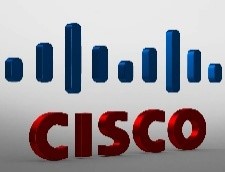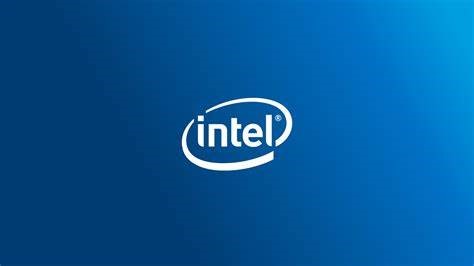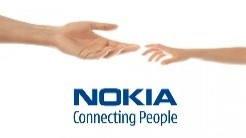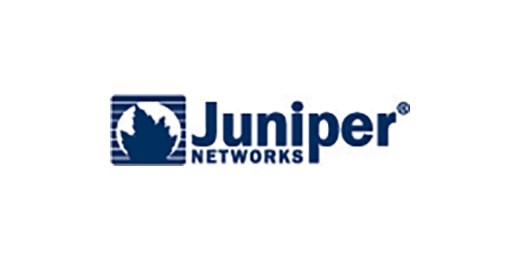
Top Trends in 10G Technology: Key Companies Analysis, Technology Assessment and Future Growth Analysis 2040
RELEASE DATE: Jun 2025 Author: Spherical InsightsRequest Free Sample Speak to Analyst
Introduction:
The network of connectivity is growing at a rapid pace with the help of novel technology in every kind of sector and every corner of global. With the high penetration of smartphones, laptops, and other electronic gadgets in daily routine, that show a need for the internet and broadband connections and their benefits. As a result, technologies are already being implemented, and more will follow soon, with rapid gigabit speeds becoming commonplace. A network term 10G is needed that is quicker, easier to use, more dependable, and more secure than any network we have seen so far. The 10G network revolution will undoubtedly be a significant milestone, with speeds and capacities at least ten times faster than the majority of broadband networks available today. Through seamless cloud interconnectivity, quick information processing, and entertaining online experiences, it promises consumers faster data transfer speeds that will transform many industries.
What's 10G?
"10G, the broadband platform of the future, will provide 10 gigabits per second, ten times faster than current networks for every user. 10G should not be confused with 5G, which is the term used by the cellular industry; the "G" in 5G stands for "generation." Internet service providers have spent billions of dollars upgrading their networks. At present, this has culminated in the super-fast one-gigabit speed most businesses and many households enjoy. Children use the internet to study and play games while their parents shop for the family, work from home, and virtually attend doctors' visits. 10G will allow talent and entrepreneurs to realize their goals with increased power and capacity while maintaining reliability and security.
How 10G Technology Will Influence Everyday Life?
The next major broadband advancement is already underway: Ten times faster than current 1G internet speeds, 10G, or "10-gigabits per second," is a potent technological platform. With speeds up to 10 gigabits per second, the 10G platform promises smooth connectivity, dependability, enhanced capacity, and enhanced security. The breakthroughs of 10G will revolutionize user experiences anywhere they need to connect, whether it be at work or home. Almost all of the new digital technologies required for corporate success demand the quickest and most dependable network available. Employee productivity will increase, efficiency will increase, and network congestion will be lessened due to 10G speed.
Emerging Trends
- A Higher Degree of Dependability:
Networks must be extremely dependable and flexible for today's internet applications, such as online gaming and video streaming. In response to these demands, CableLabs unveiled Network as a Service (NaaS), a novel strategy that streamlines the way apps communicate with networks.
- Reduced Latency
Activities requiring real-time response, such as video conversations and immersive gaming, depend heavily on latency, or the time it takes for data to travel across a network. The development of a new system to prioritize traffic for tasks requiring immediate reaction times was a significant accomplishment. Users get smoother and more pleasurable connections as a result.
- Improved Internet Speeds
For immersive experiences like interactive holographic projections, video walls, and next-generation AI and VR technologies, an extremely high-capacity network that can send a massive quantity of data to the user is necessary. For both upstream and downstream traffic over current cable hybrid fiber coax (HFC) networks, the upcoming 10G technologies will provide speeds ten times faster than the current 1 gigabit speeds that cable provides.
- Greater Privacy
Security is essential to the adoption of contemporary 10G technology, particularly since quicker data transfer speeds expose networks to increasingly complex cyberthreats. The demand for strong protection of sensitive data in transit is increasing as 10 Gigabit Ethernet makes high-throughput connectivity possible in cloud, telecom, and corporate settings. These improvements guarantee that businesses don't sacrifice the availability, confidentiality, or integrity of their data when they grow their infrastructure for performance.
Opportunities
10G technology makes it possible for which opens up revolutionary possibilities in several industries. 10G networks will supply the infrastructure required to enable these breakthroughs as the demand for bandwidth-intensive applications, such as streaming 8K video, cloud gaming, augmented and virtual reality, and the growing Internet of Things (IoT), continues to rise. Additionally, 10G's cutting-edge capabilities support remote healthcare, smart city development, and real-time industrial automation, propelling technical advancement and economic prosperity on a worldwide scale. 10G can completely transform connection, making it a vital component of the digital economy of the future.
Major Industry's glow up with this technology
- Entertainment
- Education
- Healthcare
10G technology: In the Entertainment world
The internet undoubtedly transformed the entertainment industry, and 10G networks will bring us to still another level of wonder. 10G's power will transform our entertainment experiences from passive viewing to multisensory engagement. High-speed networking will allow interactive storytelling that appeals to all five senses, from holograms and fragrance devices to spatial audio earbuds and connected air jets, all from the comfort of our own homes. The experience of being a sports fan will also be more customized in a 10G world, since smart glasses will allow viewers to watch the game from the perspective of their favorite athlete.
10G technology: For Educational purposes
The "experiential classroom" will be made a reality through virtual reality field trips to other nations to revolutionize language studies, 3D screens that bring historical characters to life in the classroom, and smart glasses that allow pupils to express themselves creatively using digital brushes, color palettes, and easels. Personalized study and lesson plans, computerized tutors that help students in their weak areas, and robotic assistants that support professors in classrooms or online study groups will all be made possible by faster internet speeds.
10G Technology: In Healthcare Business
Personalized technology, including wearables, smart home sensors, and personal smart gadgets, will be made possible by increased connectivity. These devices will be able to collect health data and promptly share it with your doctors. Additionally, holographic doctor visits and synthetic health advisors will enable patients to schedule consultations from the comfort of their own homes.
Challenges:
There are a few challenges that might slow down the adoption of the 10G technology. The list shows the barriers that can impact:
- Infrastructure Upfront Costs
- Last-Mile Connectivity
- Device Compatibility
- Security threat
- Standardization
- Power Consumption
- Regulatory and Policy Barriers
- Consumer budget concerns & considerations
There are some main barriers explained;
- Infrastructure Upfront Costs:
When networks are upgraded to 10 Gbps speeds, fiber optics are frequently used to replace or significantly upgrade existing copper/coaxial links. Fibre deployment is very costly and labor-intensive, particularly in rural or difficult-to-reach places. Upgrades to DOCSIS 4.0 are necessary for legacy cable networks, necessitating new software and hardware purchases. So, this factor could depend on regional broadband development, the percentage of user intake key market players' investment contribution, or immersive team up.
- Device Compatibility:
Major concerns are related to the recent device composition for 10G speed capability. Moreover, consumers are seeking routers, modems, and home networking equipment. Upgrades are necessary because many of the devices in use today are made for 1G or slower speeds. Consumer hardware with 10G capability is still expensive and hard to get.
- Security Risks:
The lack of awareness of such user-friendly connectivity and an insufficient encouragement campaign for assisting literacy impeded the growth of such a network-wide adoption. The attack surface for cyber threats is expanded by faster internet and more connected devices. Strong security measures, like as end-to-end encryption and real-time threat detection, are required for 10G networks, which could prevent such threats.
Company snapshot:
The Top 10 companies that contributed to the 10G technology.
- Cisco Systems
- Broadcom
- Intel
- Nokia
- Calix ADTRAN
- ARRIS (CommScope)
- Juniper Networks
- Hewlett-Packard Enterprise (HPE)
- Corning Incorporated
1. Cisco Systems:

Headquarters Location: San Jose, California, USA
Founded: 1984
Cisco Systems' cutting-edge Routed Passive Optical Network (Rotted PON) solutions have been instrumental in the development of 10G broadband technology on the global stage. By incorporating 10G XGS-PON capabilities straight into Cisco's high-performance routers, such as the NCS 540, 5500, and 5700 series, this method reimagines conventional broadband infrastructure. Service providers may now offer symmetrical 10 Gbps speeds over fiber due to Cisco's small form-factor pluggable (SFP+) modules, which simplify operations and minimize hardware footprint. This modular architecture makes it simple to scale and future-proof, meeting changing bandwidth requirements. its IOS XR operating system serves as the foundation for the Routed PON architecture, guaranteeing strong performance and security. Furthermore, Cisco's Routed PON Manager offers a centralized network administration platform with capabilities including analytics, monitoring, and service provisioning.
Recent development:
- Cisco expanded its AI networking capabilities through a collaboration with NVIDIA. The partnership aimed to integrate Cisco Silicon One with NVIDIA Spectrum-X, creating a unified architecture that simplified the process of building AI-ready data center networks. This collaboration offered enterprises flexibility and choice in AI data center investments by combining Cisco's networking hardware with NVIDIA's high-performance computing technologies.
2. Intel:

Headquarters: Santa Clara, California, USA.
Founded: 1968.
Intel is a major force behind the development of 10G technology, especially in the field of high-speed Ethernet solutions for edge computing, enterprise networks, and data centers. Their 10G Ethernet devices, such as the Intel Ethernet E610 and E830 series, offer dependable, secure, and power-efficient connectivity choices that can handle a variety of speeds up to 10 Gbps and higher. These systems have cutting-edge features that allow for smooth upgrades and optimal network performance, such as improved security protocols, precise timing, and complete manageability. With an emphasis on scalability, dependability, and energy economy, Intel's 10G technology is guaranteed to satisfy the expanding needs of contemporary applications such as cloud computing, artificial intelligence workloads, and telecommunications infrastructure.
Product Overview
- The Intel X550 Series
• Type: Network Interface Cards (NICs) with dual ports and 10GBase-T
• Connectivity: RJ45 copper ports (suitable for normal Ethernet cables); interface: PCIe (PCI Express)
• Use cases include virtualization, data center network enhancements, and server connections.
• Benefits include: Low latency and power efficiency of Backward compatibility with 10G, 5G, 2.5G, 1G, and 100 Mbps speeds and support
Advanced offloading technologies, such as TCP/IP offload, are supported.
3. Nokia:

Headquarters: Espoo, Finland
Founded: 1865 (shifted focus to telecoms in 1967)
Nokia is a world leader in passive optical network (PON) and fiber access technologies. In addition to developing platforms that are prepared for 25G and 50G upgrades in the future, it has been at the forefront of delivering 10G broadband (XGS-PON). ISPs and telecom companies can use their technologies to provide multi-gigabit internet at scale with affordable, future-proof technology. With its Lightspan platforms, Quillion chipsets, and Altiplano cloud software, Nokia supports fast, efficient, and scalable fiber deployments for both urban and rural environments.
Recent Developments:
- In May 2025, Nokia introduced a co-existence network element that enabled 10G, 25G, and 50G PON services to run simultaneously on the same fiber, protecting existing infrastructure investments while allowing for flexible, scalable upgrades. Without having to replace infrastructure, this can let operators make the most of their current fiber and meet a variety of client needs. The new co-existence network component and Nokia's wide range of multi-PON solutions give operators a wide range of choices to handle a variety of situations in tactical and mass market multi-gigabit deployments.
4. HP Hewlett-Packard Enterprise (HPE):

Headquarters: Spring, Houston, Texas, USA
Founded: November 2015 (spun off from Hewlett Packard)
10G technology is mostly supported by HP (Hewlett-Packard) through its enterprise networking and data center solutions, especially those sold under the HPE (Hewlett-Packard Enterprise) brand. Switches, network interface cards (NICs), and servers are among the 10 Gigabit Ethernet (10GbE) solutions that HPE offers. These products are made to provide modern IT environments with high-speed connections, low latency, and scalable performance. Applications that require a lot of data, such as cloud computing, virtualization, artificial intelligence, and big data analytics, depend on these technologies. HP helps businesses meet increasing bandwidth demands and guarantee quicker, more dependable communication between devices and systems within workplace networks by incorporating 10G technology into its networking hardware.
5. Juniper Networks:

Headquarters: Sunnyvale, California, USA
Founded: February 1996
Juniper Networks has a strong and adaptable 10Gigabit Ethernet (10GbE) portfolio that includes switches, routers, and optics to support data center, enterprise, and service provider settings. Their approved 10G/1G SFP+ transceivers are completerly compliant with Junos OS and multivendor standards, supporting different form factors (SFP, XFP) over distances ranging from 10 m to 80 km. The QFX5100 family of switches offers top-of-the-line 1/10/40/100 GbE solutions with up to 48 SFP+ and 6 QSFP ports. These switches include low latency, line-rate throughput, and Apstra-driven intent-based automation. For campus and edge deployments, Junipers QFX5120 offers MACsec-capable 10 GbE RJ-45 and SFP+ ports, while the QFX5210 offers configurable 10/25/40/100 GbE interfaces tailored for spine-leaf fabrics. Furthermore, in large-scale data center installations, Junipers QFabric technology uses full-mesh 10GbE fabrics to provide ultra-low latency (3-5 µs port-to-port).
Recent Development:
- In February 2025, Juniper introduced the EX4000 switch line, which was based on Junos OS and Mist AI. Ideal for contemporary enterprise deployments, these campus-edge switches provide Layer 2/3 10 GbE access, Wi-Fi 7 backhaul, and AIOps capabilities like proactive troubleshooting and zero-touch provisioning. Simultaneously, enterprise networks are becoming more challenging to maintain due to the challenges of network outages, sluggish troubleshooting, fragmented architecture, and manual deployment. This is particularly when the need to extend locations, add more devices and applications, and support Wi-Fi 6E/7 is growing rapidly.
Asia Pacific holds the dominance in the 10G technology on the worldwide stage.
The market for 10G technology is dominated by Asia-Pacific, mostly because of the rapid expansion of fiber-optic infrastructure in nations like China, Japan, and South Korea. With early commercial deployments of 10G PON (Passive Optical Network) and significant government-backed investments, China has been a leader in this region. Local suppliers like Nokia and Huawei are supporting telecom operators in the Asia-Pacific region as they roll out 10Gbps fiber networks to provide future-proof services (AI, AR/VR, smart cities, 5G fronthaul). Markets such as Singapore, Vietnam, China, Fiji, and Cambodia have demonstrated early uptake, indicating a strong push toward full-scale 10G internet and even early looks at next-generation 25/50G deployment.
Key Regional Market development:
In February 2025, Nokia revealed that StarHub has successfully finished rolling out its XGS-PON network statewide, bringing 10 Gbps internet speeds to hundreds of thousands of homes in Singapore. The enhanced broadband network offers consumers instant access to the extra bandwidth required to run resource-demanding applications like artificial intelligence, immersive gaming, and cutting-edge security. Additionally, StarHub will be able to provide new premium services that open up new revenue streams. Nokias Altiplano Access Controller will be used by StarHub to enhance and automate network usage. Network and service operations can become more automated and more efficient with the use of advanced analytics and trained AI agents, like the ONT Health Monitor application.
North America highlights the growth of 10G technology with a rapid pace on the worldwide stage.
In North America, 10G technology is essential to the development of high-speed connections in sectors like cloud infrastructure, enterprise networking, telephony, and smart cities. Both the public and commercial sectors are investing in updating existing networks to 10 Gigabit Ethernet (10GbE) due to the growing need for bandwidth-intensive applications such as video streaming, remote work, IoT, and AI workloads. Data center operators and businesses are implementing 10G switches and adapters for improved performance and dependability, while major providers such as Comcast, Charter Communications, and Bell Canada are testing or growing 10G broadband services. North America continues to be a key location for the deployment and innovation of 10G technology, frequently acting as a test bed for wider global acceptance, thanks to the support of companies like Cisco, Intel, Broadcom, and HPE.
Key Market development:
In July 2024, Frontier and Nokia were the first companies in North America to successfully test 100G, 50G, 25G, and 10G broadband speeds on their current network at the same time using Passive Optical Networks (PON) technologies. This accomplishment demonstrates how operators can take advantage of the infrastructure already in place to satisfy the growing demand for extremely quick connectivity. Frontier is the largest pure-play fiber provider in the U.S. Driven by our purpose, Building Gigabit America®, they deliver blazing-fast broadband connectivity that unlocks the potential of millions of consumers and businesses.
Development news for 10G technology
- In April 2025, China's first commercial 10G broadband network was launched in Hebei Province's Sunan County. Huawei and China Unicom worked together to use 50G Passive Optical Network (PON) technology to reach this milestone. The network puts China at the forefront of broadband technology and greatly improves high-bandwidth applications by offering download rates of up to 9.8 Gbps and upload speeds of about 1 Gbps.
- In September 2024, Broadband service providers throughout the world can now use MediaTek and its subsidiary AIROHA's entire Wi-Fi 7 and 10G-PON platform solution. This partnership helps European tier-1 service providers, and a number of initiatives are anticipated to start offering commercial services in 2025. Numerous development environments and operating systems, such as prplOS, RDK-B, OpenWrt, and OpenSync, are compatible with the platform.
- In September 2023, the 10G Fiber Gateway Platform, which Qualcomm unveiled, is intended to provide families and small companies with 10Gbps broadband connections. The platform guarantees high-speed, low-latency broadband connectivity by fusing multi-Gigabit Wi-Fi 7 connectivity with 10G PON technology. With Qualcomm's Service Defined Wi-Fi technology and cloud-to-device quality of service framework, service providers can offer unique services that are tailored for remote work, gaming, and streaming. Charter Communications and EE have announced collaborations for the technology, which is anticipated to launch commercially by the summer of 2024.
Final sum-up on the future of 10G technology:
In summary, 10G technology has a bright future ahead of it, as it will redefine the parameters for internet connectivity and performance. The next generation of digital experiences will be built on top of 10G, which promises to deliver lightning-fast speeds, ultra-low latency, and increased network dependability. 10G will make it possible for smarter homes, more productive industries, and universal digital access as global investment and infrastructure development pick up speed. This will create a more inventive and connected world. In addition to propelling scientific progress, its adoption will generate substantial economic and societal benefits in the years to come.
About the Spherical Insights & Consulting
Spherical Insights & Consulting is a market research and consulting firm which provides actionable market research study, quantitative forecasting and trends analysis provides forward-looking insight especially designed for decision makers and aids ROI.
Which is catering to different industry such as financial sectors, industrial sectors, government organizations, universities, non-profits and corporations. The company's mission is to work with businesses to achieve business objectives and maintain strategic improvements.
CONTACT US:
For More Information on Your Target Market, Please Contact Us Below:
Phone: +1 303 800 4326 (the U.S.)
Phone: +91 90289 24100 (APAC)
Email: inquiry@sphericalinsights.com, sales@sphericalinsights.com
Contact Us: https://www.sphericalinsights.com/contact-us
Need help to buy this report?